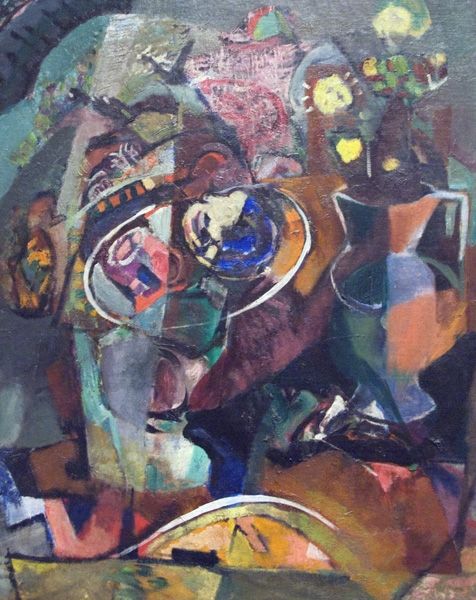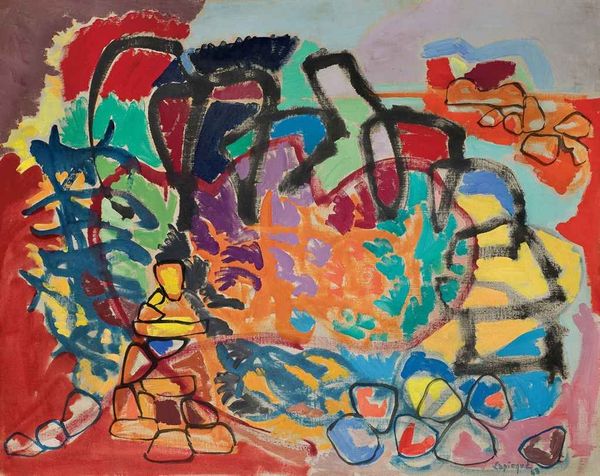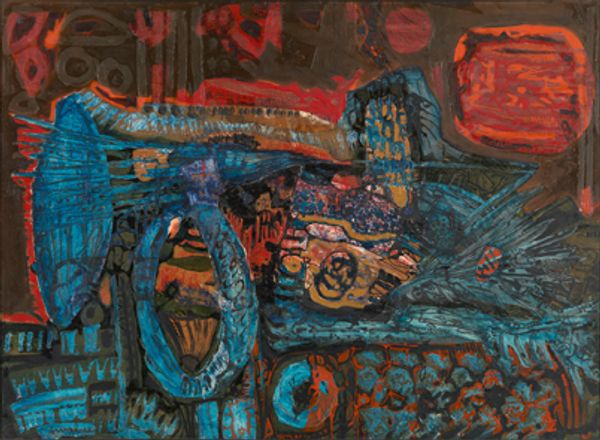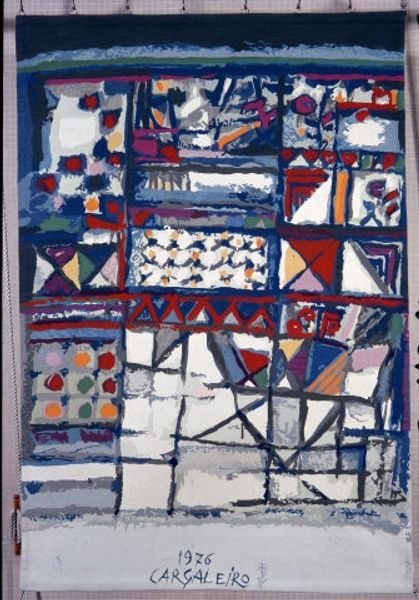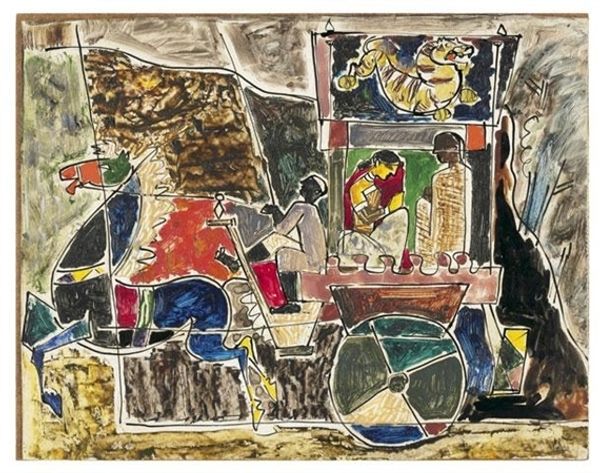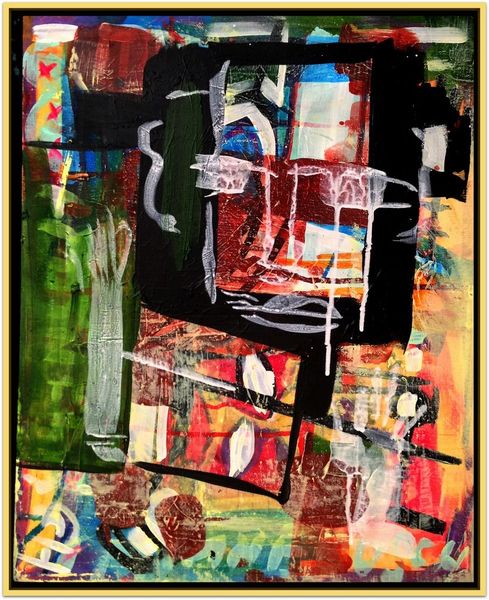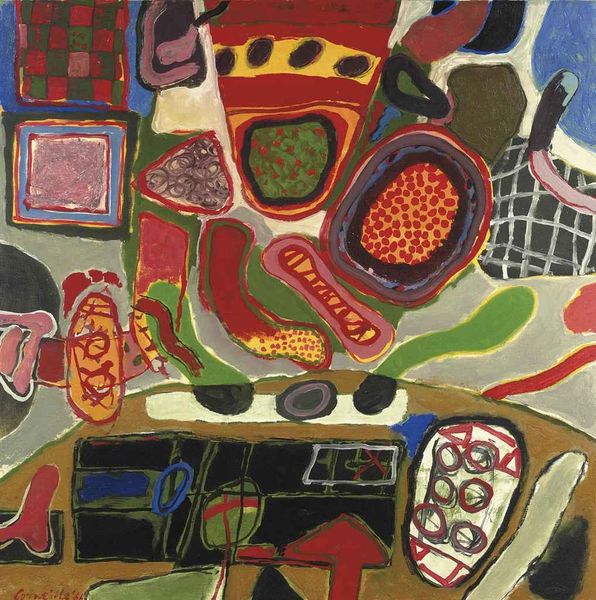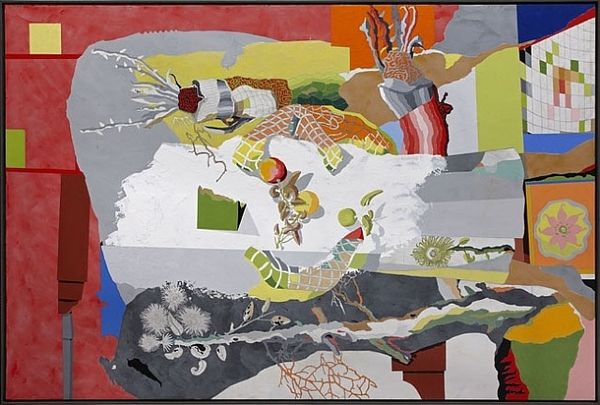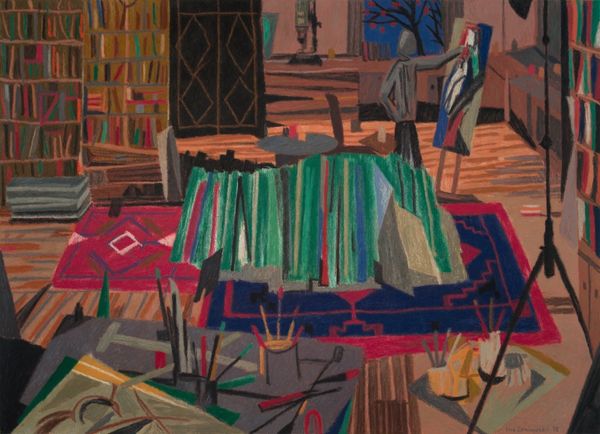
mixed-media, painting
#
mixed-media
#
contemporary
#
narrative-art
#
painting
#
figuration
Dimensions: 60 x 80 cm
Copyright: Małgorzata Serwatka,Fair Use
Curator: Małgorzata Serwatka's mixed-media work titled "Machines," created in 2006, immediately strikes me with its dense layering and kaleidoscopic feel. Editor: It’s busy, isn't it? I am overwhelmed. My eye bounces between those odd teapots, the art supplies on those tilted tabletops, and then the backdrops within backdrops. But that controlled chaos hints at something really compelling beneath the surface, something about labor perhaps. Curator: I agree. I see it as a critical exploration of artistic production itself. Looking at the visible textures, layers, and the seemingly careless brushstrokes, I think it deconstructs the myth of effortless creativity. Every visible mark speaks to work. Editor: Right. It's figuration, but also quite abstracted. There are multiple canvases of hands, seemingly working on something, which underscores the importance of the artist’s body in the physical creation of the work, or rather the physical exertion, labor, and skill required of a painter or sculptor. How would the painting shift in meaning if one were to learn more about Serwatka’s position as a woman artist? Curator: Good question. I feel that these layers push at that binary between high art and craft that art history continues to cling to. Editor: Definitely, the mix of media, and the fact that it almost reads like a constructed tableau rather than just a flat canvas, reinforces that. It is breaking down art hierarchies and maybe, perhaps, is trying to reach audiences not usually allowed inside of galleries and institutions, too. Curator: The narrative qualities of the painting are indeed worth noting, in that they can invite varied interpretations. The recurring visual motifs—art-making, teapots, strange-shaped hands—weave a kind of symbolic network that feels intensely personal but also quite open to re-reading. Editor: Absolutely. Thinking about access is crucial. While it's tempting to analyze solely formal elements, we also have a responsibility to see this through a lens of how identities, power dynamics, and cultural backgrounds intersect within and outside the art world. What can “Machines” say about marginalized creators and the economies they operate within? Curator: Ultimately, I find "Machines" so captivating because it is not just a still life. The materiality demands consideration; it acknowledges and visualizes art as a site of constant, tangible construction and deconstruction. Editor: For me, that chaotic energy you speak about, now combined with a vision of inclusion and understanding artistic labor from a social justice lens, helps open "Machines" up to the twenty-first century.
Comments
No comments
Be the first to comment and join the conversation on the ultimate creative platform.

